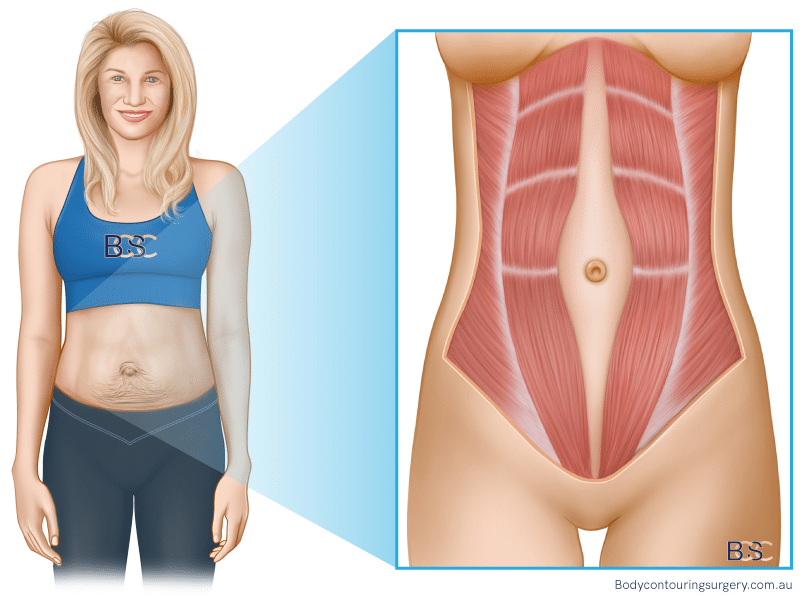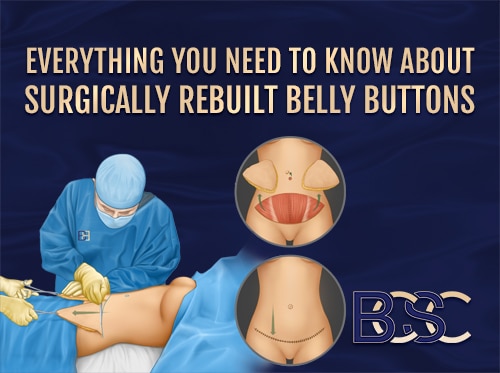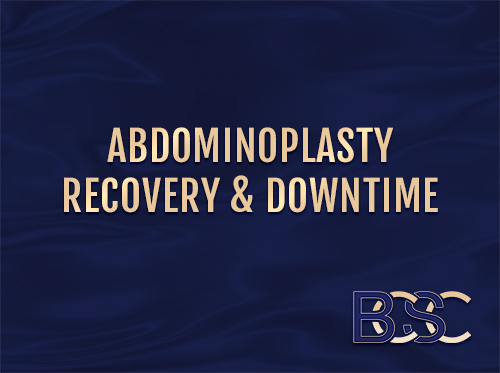How to Tell if Your Abdominal Muscles Were Torn During Pregnancy
Pregnancy is a time of remarkable physical change. As the baby grows, the abdominal wall stretches to make space. These changes are completely normal, though for some women the abdominal muscles may not return fully to their pre-pregnancy position. This is known as abdominal separation, or diastasis recti.
Studies suggest that up to two-thirds of pregnancies result in some degree of abdominal muscle separation. While this can affect abdominal strength and appearance after childbirth, there are ways to reduce the risk, support recovery, and treat the condition if it persists.
What Happens to Your Abdominal Muscles During Pregnancy
The rectus abdominis muscles, commonly called the “six-pack,” run vertically along the front of the abdomen. They are normally held together by connective tissue called the linea alba.
During pregnancy, the expanding uterus places pressure on the abdominal wall. This pressure stretches and thins the linea alba, which can lead to the rectus abdominis muscles moving apart. After childbirth, the muscles may gradually move closer together again, although for some women the separation remains.
What is Abdominal Separation?
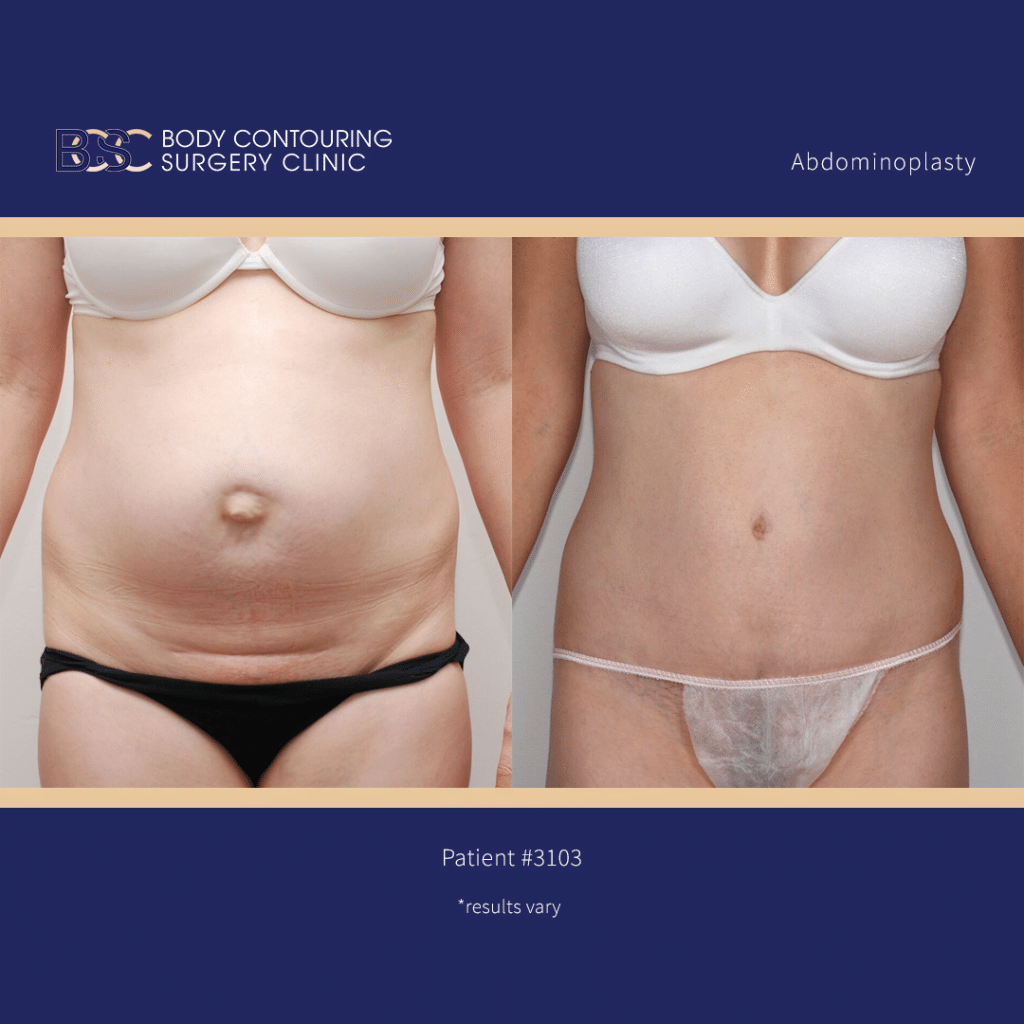
Disclaimer: Operation performed by Dr Bernard Beldholm. Adult content, surgery has risks, individual results vary, seek 2nd opinion. Please see the full disclaimer.
Abdominal separation, or diastasis of the rectus abdominis muscle (DRAM), is medically defined as an inter-rectus distance of 30 mm or more, measured three centimetres above the umbilicus while in a relaxed state.
If the muscles do not return to their original alignment months after childbirth, the separation can remain visible and affect function. This is a common condition after pregnancy, but it can also occur in men and even in newborns.
Risk Factors for Abdominal Separation
Some factors increase the likelihood of abdominal separation, including:
- Multiple pregnancies close together
- Age over 35 years
- Carrying twins, triplets, or a high birth-weight infant
- Having a slender body build
- Overexerting the abdominal muscles
- Vaginal delivery
Symptoms of Diastasis Recti
Diastasis recti does not usually cause severe pain, but it can lead to changes in abdominal function and appearance. Symptoms may include:
- A visible midline pouch or hollowing around the umbilicus
- Soft or jelly-like tissue texture near the umbilicus
- Coning or doming of the abdominal wall when straining or exercising
- Lower back pain due to reduced core support
- Pelvic or hip discomfort
- Difficulty lifting objects or performing daily activities
- Changes in posture
- Incontinence or constipation
- Reduced abdominal wall strength
How to Check for Abdominal Separation at Home
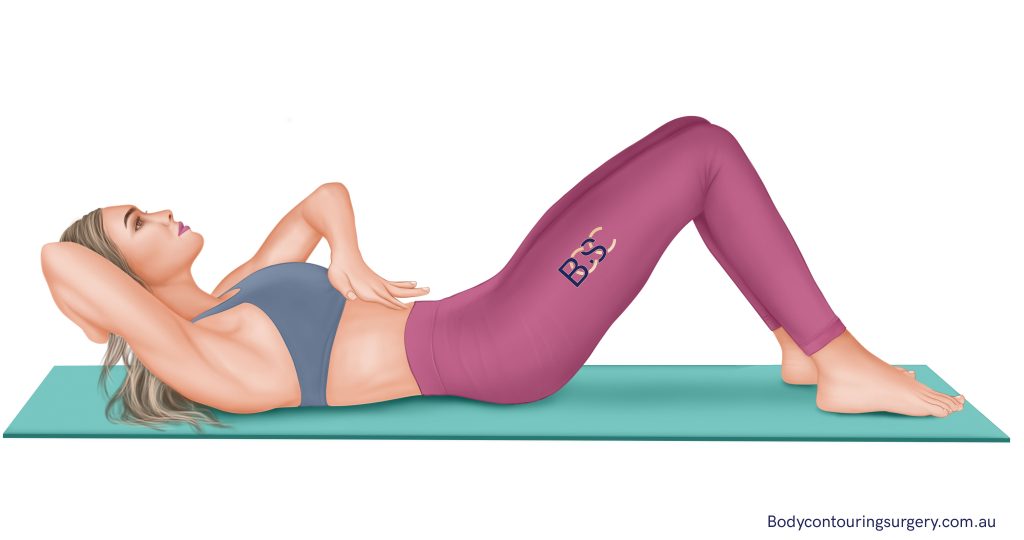
A simple self-test can be done at home:
- Lie on your back with knees bent and feet flat on the floor.
- Support your head with one hand, and place the other hand across your midline.
- Slowly lift your shoulders off the ground as if beginning a crunch.
- Engage your pelvic floor muscles.
- With your upper hand, feel along the line of your umbilicus for a gap.
If the gap is wider than one finger, you may have some degree of abdominal separation. Women can repeat this test in the weeks following childbirth to monitor recovery.
The Four Main Abdominal Muscle Groups
The abdominal wall is made up of four key muscle groups. Each plays an important role in stability, posture, and supporting the spine and internal organs. During pregnancy, these muscles adapt to the growing baby and may be affected in different ways.
Transversus Abdominis

The transversus abdominis is the deepest layer of abdominal muscle, wrapping around the torso like a corset.
- Provides core stability and maintains internal abdominal pressure
- Supports the spine and pelvic floor
- Strengthening this muscle before and during pregnancy may help reduce strain on the linea alba
Rectus Abdominis
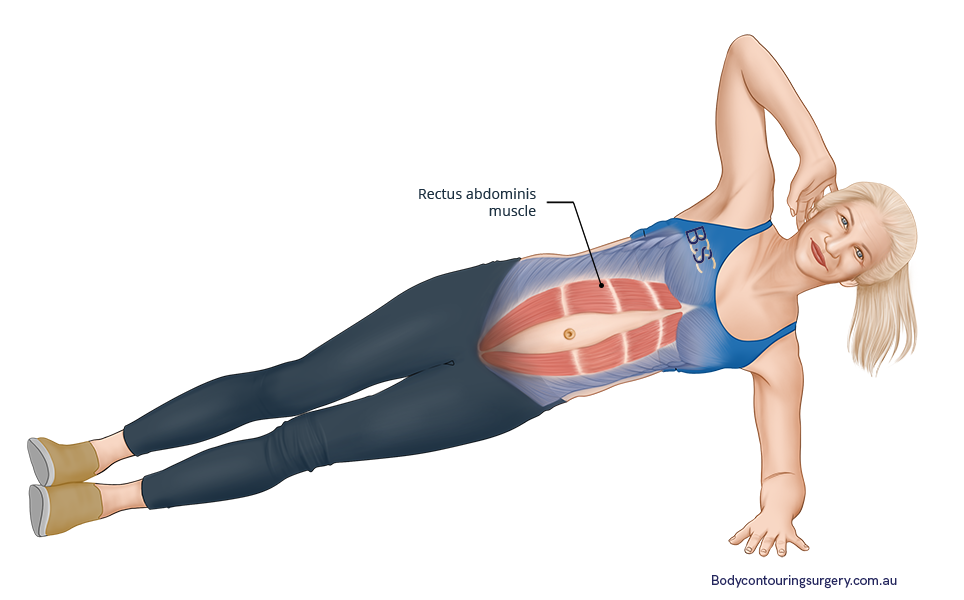
The rectus abdominis is the pair of long muscles that form the “six-pack.”
- Held together by the linea alba, which stretches during pregnancy
- Most affected in diastasis recti
- May partially or completely return to position after childbirth, though for some women a gap remains
External Oblique Muscles
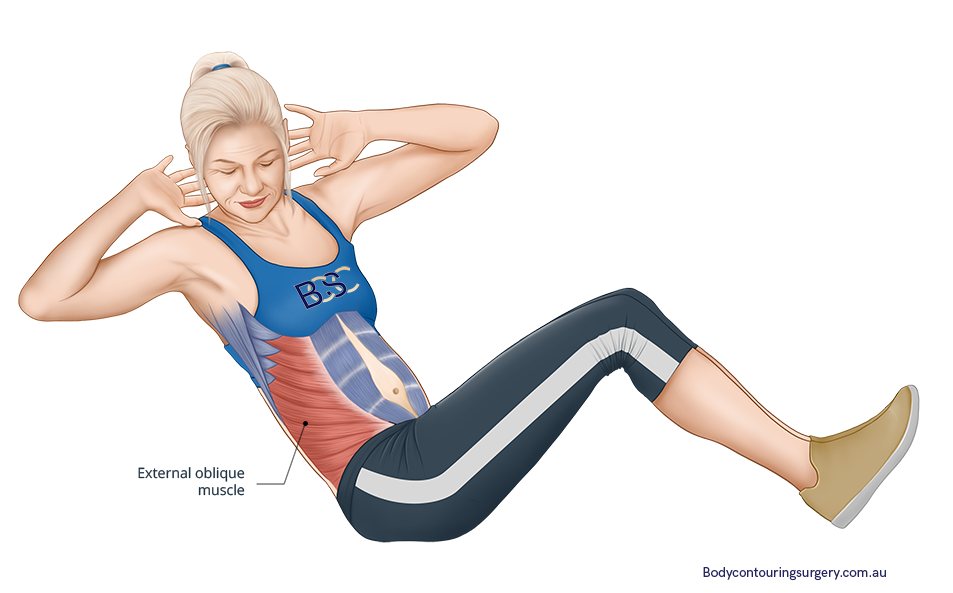
The external obliques are positioned on either side of the rectus abdominis, running diagonally downward.
- Help with torso rotation and side-bending
- Assist in breathing and compressing the abdominal wall
- Stretch during pregnancy but are less likely to separate
Internal Oblique Muscles
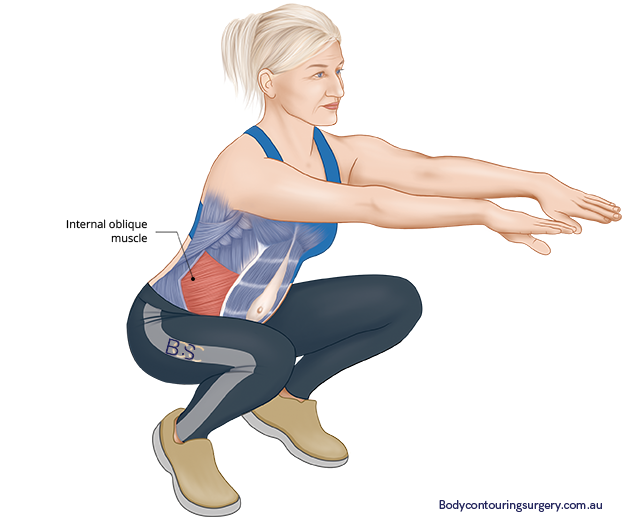
The internal obliques sit beneath the external obliques, with fibres running diagonally upward.
- Work with the external obliques for twisting and bending movements
- Provide stability to the pelvis and spine
- Help reduce strain on the abdominal wall during pregnancy
Preventing Abdominal Separation (Diastasis recti) During Pregnancy
Not all cases can be prevented, but certain habits may reduce risk:
- Maintain a healthy weight during pregnancy
- Engage in safe, low-impact exercise such as walking, yoga, or pilates
- Strengthen the pelvic floor and deep core muscles with approved exercises
- Practise good posture to reduce abdominal strain
- Avoid lifting heavy objects
- Use the “log roll” technique when getting out of bed
- Avoid exercises that push the abdominal wall outward, such as crunches and planks
Even with these precautions, some degree of abdominal separation is normal. For many women, the gap improves naturally in the months after childbirth.
Treatment Options for Abdominal Separation
Non-Surgical Treatments
Milder cases (2–4 cm separation) often improve with targeted physiotherapy. A physiotherapist can guide exercises that strengthen the abdominal wall without worsening the separation. High-strain exercises like crunches, planks, or heavy lifting should be avoided unless supervised.
Surgical Treatments
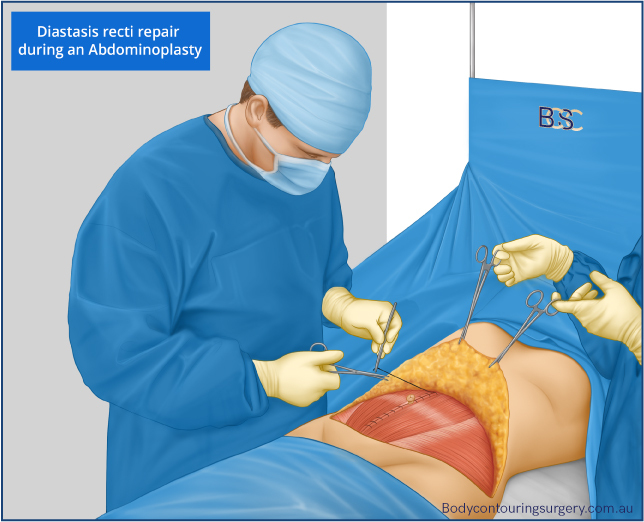
In more severe or persistent cases, surgery may be considered. Abdominoplasty is a procedure in which the connective tissue is repaired and the rectus abdominis muscles are repositioned. This option is usually reserved for women who have significant functional or physical concerns. Surgeons often recommend waiting at least 12 months after childbirth to allow for natural healing before considering surgery.
Frequently Asked Questions
Can abdominal muscle separation (Diastasis recti) be treated?
Yes. Mild cases often respond well to physiotherapy, while more severe cases may require surgery. Treatment can be sought months or even years after pregnancy.
What causes abdominal separation (Diastasis recti) during pregnancy?
Factors include carrying multiple or larger babies, advanced maternal age, posture changes, back-to-back pregnancies, and genetics.
What exercises should be avoided with abdominal separation (Diastasis recti)?
Movements that increase outward abdominal pressure, such as sit-ups, planks, or heavy lifting, can worsen separation. It’s best to work with a physiotherapist on a safe programme.
